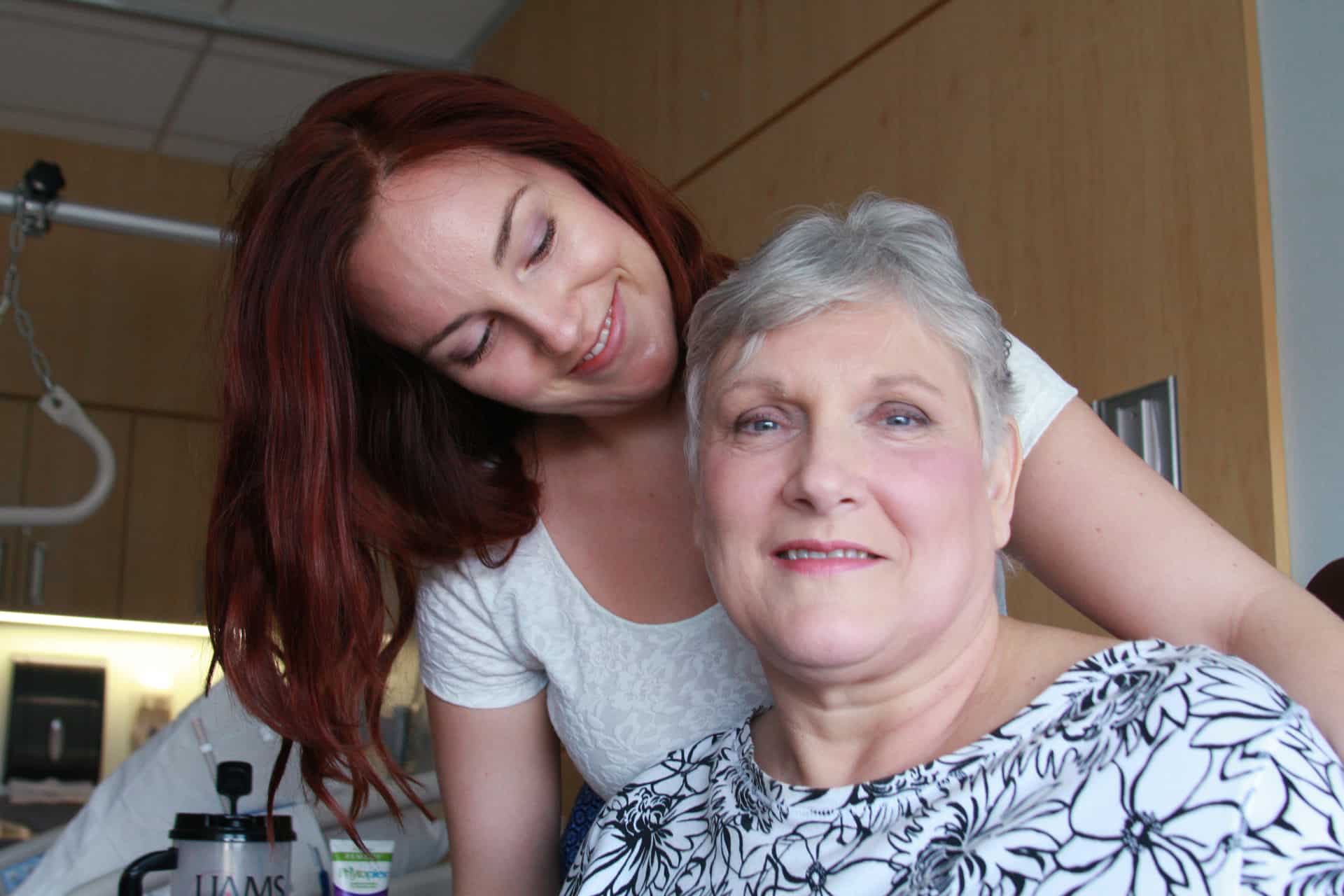Knee Replacement Patient Doesn’t Skip a Beat After Surgery
| Sept. 2, 2015 | One day after a total knee replacement, Jeanne Nash is able to move her leg up and down. With assistance from her daughter, Kayla, she’s even able to walk across her hospital room.
She’s scheduled for discharge after an appointment with her physical therapist. The pain now – just one day later – is less than it was before the operation.
“I woke up this morning and it doesn’t hurt,” Nash said. “I can bend my legs. I’m amazed. I’m sore, but it’s nothing like that stabbing, burning pain that I was experiencing before the surgery.”
“She started checking email about two hours after the surgery was over,” Kayla said. “She hasn’t missed a beat.”
Nash is the value analysis director at UAMS. She’s worked at the institution for 25 years. Before that she was a nurse.
“I worked in the OR for 30 years,” Nash said. “Then I started having joint issues. The OR isn’t the place to be when you have joint problems.”
She has osteoarthritis with degenerative joints and is no stranger to joint replacement surgery. Nash has had her right hip and her right shoulder replaced. Her knee started bothering her about 18 months ago.
“I saw Dr. Barnes then, but I elected to have steroid shots instead of surgery,” Nash said.
C. Lowry Barnes, M.D. is a professor and chair of the Department of Orthopaedic Surgery in the UAMS College of Medicine.
“When our patients have arthritis in their hips and knees, we want to get them to where they’re able to do the things they want to do without pain.” Barnes said.
The steroids were helpful to Nash for a year and a half. But a few weeks ago, while shopping, the pain became unbearable.
“I just turned it a certain way as I was walking. It felt like someone was stabbing me in my knee,” Nash said.
Nash went to see Barnes, who was able to work her into his surgery schedule the next week. He says the pain was likely caused by bone-to-bone interaction. During knee replacement surgery, the ends of the bones in the knee are capped with metal and plastic parts.
“Surgery takes about an hour. Most patients stay in the hospital one day now,” Barnes said. “Things have improved dramatically since I was a resident.”
A few decades ago, knee replacement patients would stay in the hospital for 12 days. Barnes says some of the things that have changed for the better include anesthesia techniques and pain management strategies. Patients no longer have as much pain after surgery and they get back to moving soon after the operation.
“We’ve learned most of our patients are well but have a bad hip or knee. They don’t need to be in a hospital all that time,” Barnes said. “They need to be at home in their own surroundings getting better and getting back to life.”
“I’m relieved she’s better now,” Kayla said. “I wish she’d done it sooner.”
Nash says she plans to work from home for the next few days and return to the office in two weeks.

